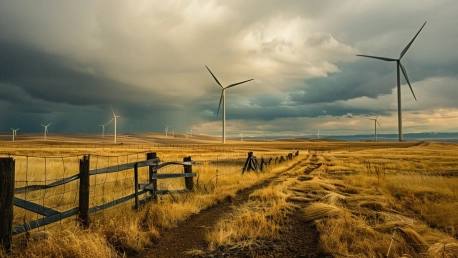Wind farms have emerged as a formidable force in mitigating climate change, primarily due to their substantially lower carbon emissions compared to those from fossil fuel power plants. Central to this sustainable revolution is the Harapaki wind farm in New Zealand, which a new study reveals to have an impressively brief greenhouse gas payback time.
The Carbon Footprint of Harapaki Wind Farm
Life Cycle Assessment of Wind Energy
At the Harapaki wind farm, each of the 41 turbines can generate 4.3 megawatts of power, marking a significant stride in wind energy production. Throughout the lifecycle, from manufacturing to decommissioning, the turbines inevitably produce emissions. However, these are notably lower compared to other forms of energy generation. This detailed assessment has accounted for every emission point, painting a comprehensive picture of the wind farm’s environmental impact over its predicted 30-year service life.
The Efficiency of Modern Wind Farms
Astoundingly, the greenhouse gas payback time for the Harapaki wind farm is between 1.5 and 1.7 years. Once this brief period concludes, the wind farm operates with an ultra-low carbon footprint for the remainder of its 30-year lifespan. This striking efficiency is illustrative of the untapped potential in wind farms for effective carbon offsetting, outclassing even the top-tier natural gas power plants in terms of environmental sustainability.
Comparisons with Natural Gas Power Plants
Wind Energy Versus Natural Gas Emissions
In the competition to lower carbon footprints, wind farms possess a significant edge over natural gas power stations. The efficiency of Harapaki’s turbines stands as a testament to wind energy’s superior capability in curbing emissions. With these findings at hand, the environmental benefits seen with wind energy are not just conjecture—they are evidential and quantifiable.
Technological Advancements and Carbon Offset
Innovations in turbine technology coupled with improved waste management are set to diminish the carbon footprint of wind energy further. The Harapaki wind farm’s study demonstrates the significant impact of blade recycling; avoiding landfills with turbine blades can lead to further emission reductions, showcasing a proactive approach to environmental stewardship that extends beyond the operational phase of the turbines.
Minimizing Manufacturing Emissions
Sustainable Practices in Turbine Production
The wind energy industry is moving towards sustainable production practices. The integration of low-carbon materials such as steel, produced utilizing wind energy itself, is gaining momentum. This not only channels wind energy through the turbines but also embeds it within the very fabrication process of the turbines, further reducing emissions from cradle to crest.
Green Steel Initiatives
Vestas and Nucor are pioneering the use of green steel in the construction of wind turbines, paving the way for an even lower carbon footprint. These initiatives are crucial as they address the environmental impacts from the very beginning of a wind farm’s development cycle, ensuring that each phase contributes positively to the overall sustainability of the operation.
Industry Innovations and Future Directions
New Materials and Manufacturing Techniques
The sector is exploring new materials such as balsa wood and plant-based resins, which have a lower environmental impact throughout their lifecycle. Manufacturing techniques like 3-D printing and spiral welding are also on the table, promising to revamp conventional processes for increased efficiency and reduced emissions.
Onsite Manufacturing Benefits
Manufacturing turbine parts on or near the wind farm site can considerably reduce the emissions associated with transportation. This approach underlines a pivotal shift in the industry’s direction towards localized sustainable energy generation, capturing the essence of what it means to create truly green power sources.
The Role of Policy and Regulation
Carbon Capture Mandates for Gas Plants
With new environmental regulations on the horizon, gas power plants are being pushed to incorporate carbon capture systems by the year 2032. These systems are required to have at least 90% efficiency, signifying a noteworthy step towards decreasing carbon output from one of the traditionally heavier emitting sectors.
Regulatory Encouragement for Clean Energy
Wind farms are playing a pivotal role in the fight against climate change by generating energy with significantly lower carbon footprints compared to traditional fossil fuel sources. At the forefront of this green energy push is New Zealand’s Harapaki wind farm, which has gained attention thanks to a recent study highlighting its remarkable efficiency in offsetting carbon emissions. The research underscores the Harapaki wind farm’s surprisingly rapid greenhouse gas payback time, signaling its potential as a model for clean energy initiatives worldwide. This means that the amount of greenhouse gases emitted during the construction, maintenance, and operation of the wind farm is quickly compensated for by the clean energy it produces, thus outpacing the environmental cost in a short span of time. As a result, Harapaki stands as a testament to the viability of wind power as a cornerstone for sustainable energy policies and a tool for significantly curtailing the global carbon footprint.









